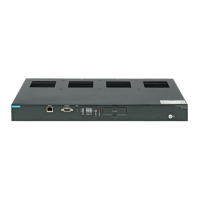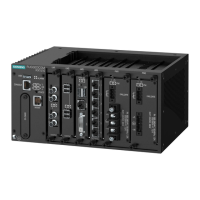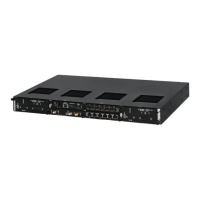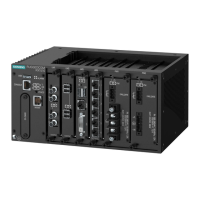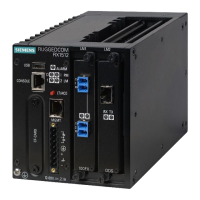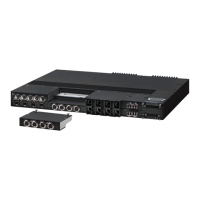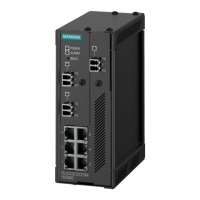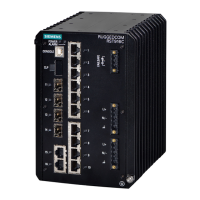RUGGEDCOM ROX II
User Guide
Chapter 5
Setup and Configuration
237
Setup and Configuration
This chapter describes how to setup and configure the device for use on a network using the various features
available in ROX II. It describes the following tasks:
• Section 5.1, “Configuring a Basic Network”
• Section 5.2, “Configuring ICMP Control”
• Section 5.3, “Enabling and Configuring CLI Sessions”
• Section 5.4, “Enabling and Configuring SFTP Sessions”
• Section 5.5, “Enabling Configuring WWW Interface Sessions”
• Section 5.6, “Enabling/Disabling Brute Force Attack Protection”
• Section 5.7, “Viewing the Status of IPv4 Routes”
• Section 5.8, “Viewing the Status of IPv6 Routes”
• Section 5.9, “Viewing the Memory Statistics”
• Section 5.10, “Managing NETCONF”
• Section 5.11, “Managing SNMP”
• Section 5.12, “Managing Time Synchronization Functions”
• Section 5.13, “Managing Cellular Modem Profiles”
• Section 5.14, “Managing the DHCP Relay Agent”
• Section 5.15, “Managing the DHCP Server”
• Section 5.16, “Managing Port Mirroring”
• Section 5.17, “Managing Firewalls”
• Section 5.18, “Managing IS-IS”
• Section 5.19, “Managing BGP”
• Section 5.20, “Managing RIP”
• Section 5.21, “Managing OSPF”
• Section 5.22, “Managing Static Routing”
• Section 5.23, “Managing Static Multicast Routing”
• Section 5.24, “Managing Dynamic Multicast Routing”
• Section 5.25, “Managing Multicast Filtering”
• Section 5.26, “Managing VRRP”
• Section 5.27, “Managing Link Failover Protection”
• Section 5.28, “Managing IPsec Tunnels”
• Section 5.29, “Managing Layer 2 Tunnels”
• Section 5.30, “Managing Generic Routing Encapsulation Tunnels”
• Section 5.31, “Managing Layer 3 Switching”
• Section 5.32, “Managing Classes of Service”
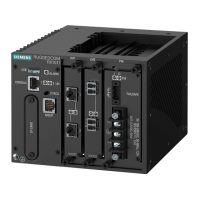
